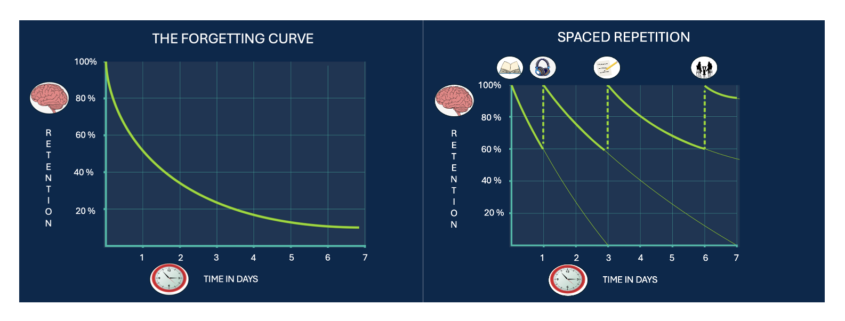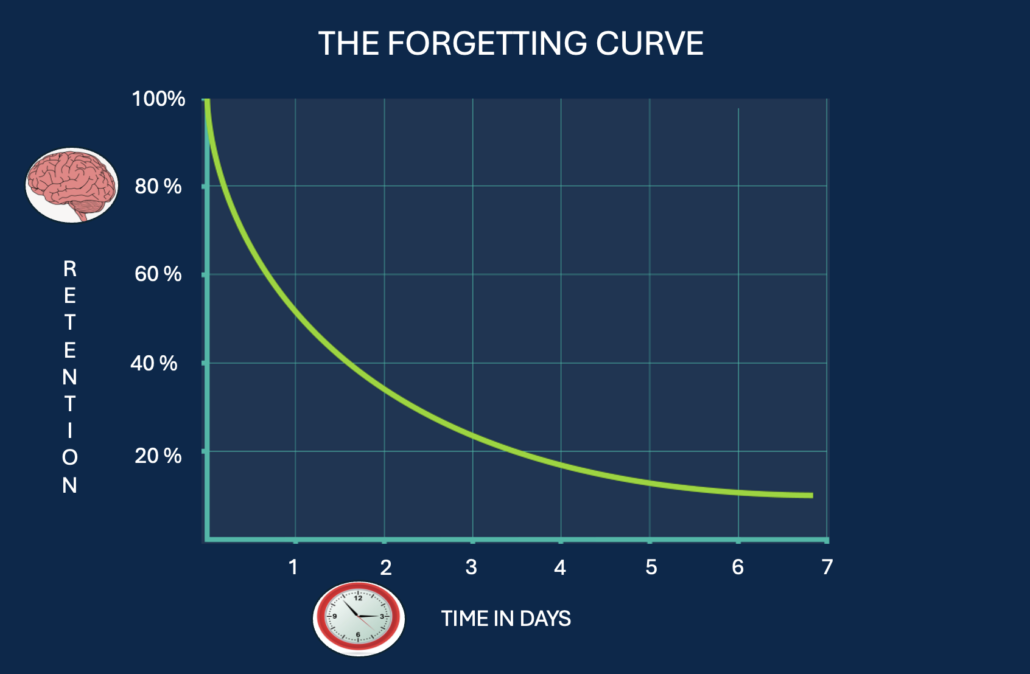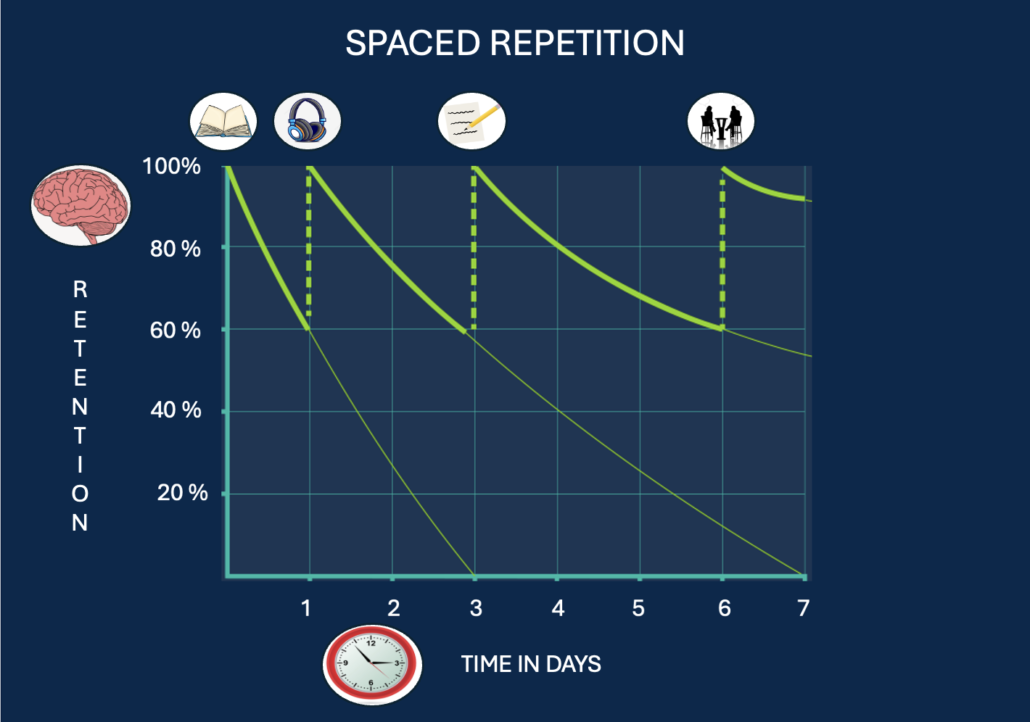
Study Strategies: Spaced Repetition
The Forgetting Curve
The Forgetting Curve is a concept in psychology that describes the pattern of how information is forgotten over time when you don’t try to actively remember it. The Forgetting Curve was first introduced by German psychologist Hermann Ebbinghaus in the late 19th century based on his research on memory.
The Forgetting Curve illustrates that the amount we remember declines rapidly in the initial period after learning. Much of what we learn, we forget within the first hour, we tend to forget most of what we’ve learned within a week. However, the shape of the curve can vary depending on factors such as the type of material being learned, a person’s learning ability and the memory strategies employed. How can we combat the Forgetting Curve?
Spaced Repetition
Spaced Repetition involves systematically reviewing and reinforcing material at increasing intervals over time. By spacing out review sessions, we can optimize memory retention and long-term learning.
How Spaced Repetition Works
-
Initial Learning: Begin by learning new material or concepts through traditional study methods, such as reading, listening, or practice exercises.
-
Review Schedule: Create a spaced repetition schedule to systematically review the material at predetermined intervals. Initially, review the material shortly after learning it, then gradually increase the intervals between review sessions.
-
Optimized Review: Focus on reviewing the material that you find most challenging or that you are at risk of forgetting.
Benefits of Spaced Repetition:
-
Enhanced Retention: By spacing out review sessions, spaced repetition strengthens memory retention and improves long-term recall of information. This results in deeper learning and mastery of the material.
-
Time Efficiency: Spaced repetition optimizes study time by focusing on reviewing material when it is most beneficial for memory consolidation. This allows you to achieve better results in less time compared to traditional study methods.
-
Long-Term Learning: Spaced repetition promotes durable learning by reinforcing information at intervals that align with the forgetting curve. This helps prevent the rapid decay of memory and ensures that knowledge is retained over the long term.
How to Use Spaced Repetition:
-
Make Notes: Write or print out notes containing the information you want to learn. Use index cards or small pieces of paper to create portable flashcards that you can carry with you.
-
Start Small: Begin with a manageable number of notes to review in each session. Gradually increase the the amount of information as you become more comfortable with the material and your recall improves.
-
Review Regularly: Set aside dedicated time for spaced repetition review sessions on a regular basis. Consistency is key to maximizing the effectiveness of spaced repetition and reinforcing memory retention.
-
Use a Spaced Schedule: Space out your review sessions based on the difficulty of the material and your learning goals. Start with shorter intervals between review sessions, then gradually increase the intervals as you become more confident in your recall.
-
Employ Active Recall: Actively attempt to recall the information before checking your answer. This engages your brain more deeply and strengthens memory retrieval pathways.
-
Focus on Problem Areas: Pay extra attention to areas that you find challenging or that you frequently forget. Spend more time reviewing these to reinforce your understanding and improve retention.
-
Mix Up the Order: Randomize the order in which you review information to prevent rote memorization and encourage deeper learning. Mixing up the order helps you strengthen your ability to recall information in different contexts.
Monitor Progress: Keep track of your progress and performance over time. Note the information you consistently struggle with and adjust your review schedule to target areas of weakness.


See also: An Infographic on the Forgetting Curve by the British Council


